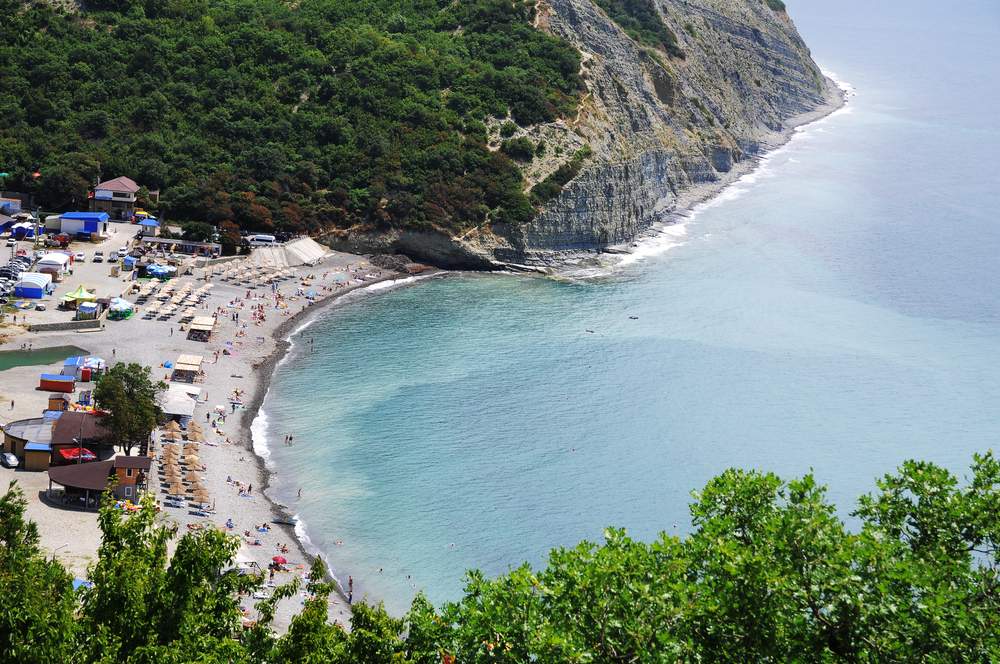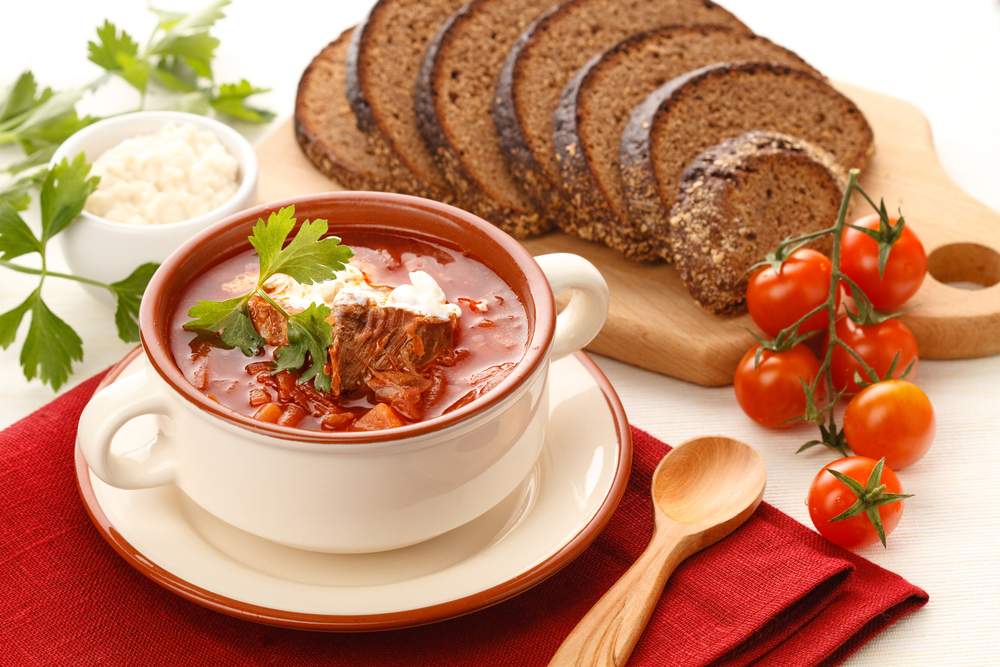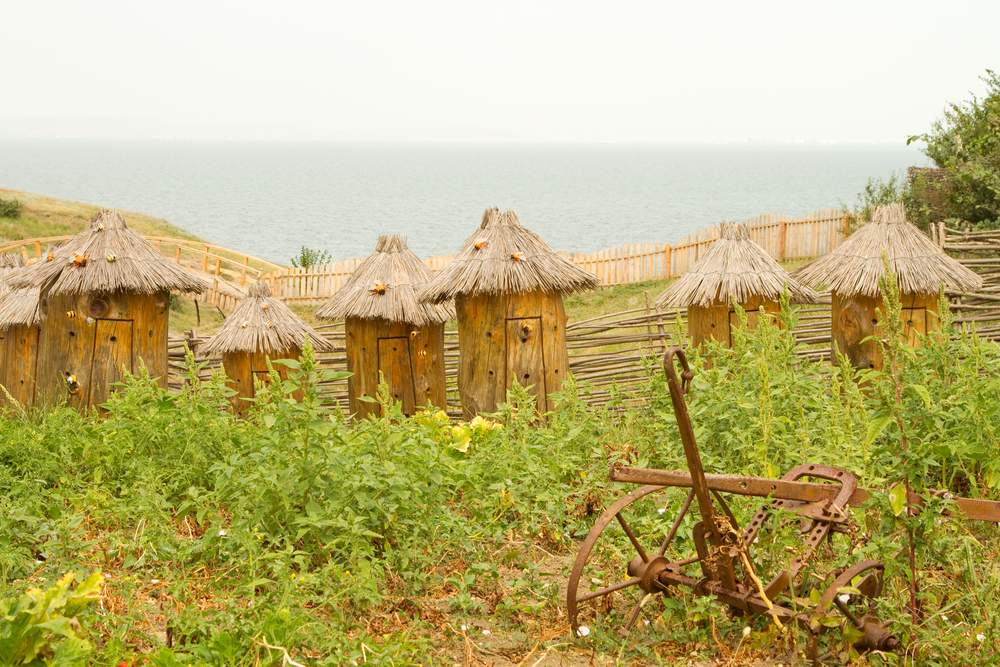A desirable destination for many travelers and backpackers,
Russia still remains largely unexplored. The Red Square and the Kremlin, St. Basil’s Cathedral, The Hermitage and other famous sights in Moscow and St. Petersburg as well as the vast and cold area that is Siberia are known to many. However, a country that spans nine time zones surely has much more to offer.
The Cold War, together with the Iron Curtain, contributed to the creation of quite a number of myths and stereotypes. Ideas that Russians to this day have about the outside world and that the outside world has about Russia.
“For example, many people still think of Russia as a cold, snowy place. While this is certainly true for some areas up north, this description can in no way be applied to all of Russia.”
For example, many people still think of Russia as a cold, snowy place. While this is certainly true for some areas up north, this description can in no way be applied to all of Russia. The South, namely the Krasnodar area (the main agricultural and resort region of the country), is one of the warmest parts of Russia with temperatures in the summer sometimes reaching 40C (105F).
Because of its excellent location inside Russia and its proximity to mountains, seas, and rivers, there’s a lot to do and explore in the South of Russia, maybe more than you can manage on any one trip. So I’ll start with the Top 7, below:
1). Ski and Swim in Sochi

Yes, you can do both here! The Black Sea coast is a popular resort strip for locals and people from other regions. Since the region hosted the 2014 Winter Olympics in Sochi, more and more foreign travelers visit, and as foreign investment flows, the area is also receiving more and more attention from tourists.
“The climate in Sochi is subtropical; it can be humid in the afternoon on a hot summer day, however, mornings and evenings are perfect for swimming and sunbathing or simply having a walk down palm promenades.”
In the summer, the sea temperature can rise up to 28C (82F) with the average being 23C (73F) and swimming here is an absolute delight. Like everywhere else, there are free (“municipal”) beaches and then there are those beaches that belong to certain hotels and are available to guests for an entrance fee. The climate in
Sochi is subtropical; it can be humid in the afternoon on a hot summer day, however, mornings and evenings are perfect for swimming and sunbathing or simply having a walk down palm promenades.
At the same time, a mere 67km (41mi) away, there is another resort called Krasnaya Polyana. This is where you ski, snowboard and ride sleds. Due to development going on, the resort prices have increased and they weren’t moderate to begin with, so you might end up paying more for accommodation or equipment than somewhere in the Alps. However it’s worth a visit if only for the breathtaking mountain views and for the food (somehow everything tastes even better when you’re so high up).
2). See the Dolmens

Dolmens (portal tombs) are single-chamber megalithic graves, usually consisting of three or more upright stones supporting a large flat horizontal table. They look very much like smaller versions of Stonehenge.
“While they’re not exactly breathtaking to look at, it’s surely interesting to touch and feel something that was quite possibly erected four or five thousand years B.C.”
The Northern Caucasus and the Black Sea region are home to many of these constructions of unknown descent. While they’re not exactly breathtaking to look at, it’s surely interesting to touch and feel something that was quite possibly erected four or five thousand years B.C.
3). Try local food in Kuban

Do you know that there are over 80
varieties of borsch? Kuban (Krasnodar region) has several of its own. More often than not a Kuban borsch is vegetarian in the summer and based on beef broth in the winter (beetroot is normally left out).
In the summer, you can also try green borsch, which has no cabbage and instead uses sorrel as a main ingredient. Don’t miss shashlik (pork BBQ, poultry or fish variations are also sometimes available) served with grilled vegetables, bread, and fresh onions. Also, pirozhki and vareniki are plentiful.
4). Take a wine tour near Anapa
Good Russian wine is a tad difficult to come by. But there are some quality wine products to be found should one know where to look. Two good places for wine-tasting are both located in the vicinity of the resort town, Anapa. The first factory produces Chateau Le Grand Vostock, which has become popular in recent years and is a good choice both for dinner and for a holiday meal. The factory also offers its guests a surprisingly affordable price for a stay at its hotel and a tour. From here you can also easily visit neighboring resort towns, go horse riding, fishing, and hunting.
Abrau Durso, the second factory worth visiting, was founded in 1870 and has a 140-year history of winemaking. Known for its champagne and sparkling wine, the factory offers 7 tours some of which include a wine-tasting.
5). Explore Taman

Taman is the first settlement of the Black Sea Cossack Host. From the end of the 15th century until 1783, this was the site of a Turkish fortress. Small and a bit isolated from the main attractions in Southern
Russia, Taman has nevertheless a lot to offer, such as the ruins of Hermonassa and Tmutarakan, ancient towns that existed long before the present settlement was founded.
“From the end of the 15th century until 1783, this was the site of a Turkish fortress”
There’s also a wine-making museum, the memorial-house of Mikhail Lermontov (a famous Russian poet and writer, who used Taman as a setting in one of his books), and museums dedicated to Cossacks and Roman Domus. The oldest Orthodox church in the Krasnodar region (built in 1793) is also here.
6). Salute the Cossacks in Krasnodar
Krasnodar, the administrative center of the region of the same name, was founded on January 12, 1794 and originally was known as Yekaterinodar which stands for “Catherine’s Gift” in tribute to Catherine the Great’s grant of land to the Black Sea Cossacks and Saint Catherine, the Martyr, who is considered to be the patron of the city. After the October Revolution, Yekaterinodar was renamed Krasnodar, meaning “red gift” which could stand for either beautiful gift or Red (Army) gift.
“From then on, the destiny of the Cossack Host was in turmoil, at times they were in favor of the state and at times not. .”
Krasnodar was built as a fortress by the Cossacks in order to defend the borders and claim Russian ownership over Circassia, contested at the time by Ottoman Turkey. From then on, the destiny of the Cossack Host was in turmoil, at times they were in favor of the state and at times not. The current government aims to resurrect the Cossack traditions and thus Cossack monuments, memorabilia and customs are in abundance. In fact, most of the monuments in the city are dedicated either to Catherine the Great or the Cossacks. Do pay a visit to the State Archeological Museum to see the exhibition on the Cossack way of living and see some of their artifacts. Every Sunday at noon there’s a fascinating change of guard in the center of the city.
7). Take a Hike in Goryachiy Klyuch
Goryachiy Klyuch is a small town about 60km (37mi) away from Krasnodar. It’s famous for its mineral water and hiking trails into the Caucasus Mountains. Most of them begin in town and last from several hours to a few days. The area is rich with waterfalls and caves and is only 72m (236’) above the sea level. The air isn’t as thin as at higher altitudes, but it’s fresh, clean, and pleasant to breathe in.
Snow is rare in this area, so hiking is possible spring through fall. The town is conveniently connected to Krasnodar and almost all seaside resorts, so whether you rent a car or not, it’s easy to get there for a day away from the city. After a long hike, relax in thermal recreational baths. Unlike the hikes, the baths are highly recommended for people with chronic illnesses, particularly cardiovascular diseases.
Intrested in Eastern Europe and Russia? Find out more:



